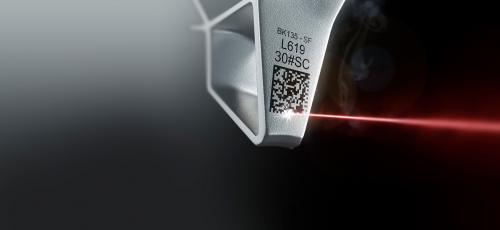In the vast aerospace field, where precision and durability are paramount, aerospace laser marking has emerged as a game-changer. This cutting-edge technology utilizes the power of lasers to create permanent marks on various aerospace components and materials.
This ultimate guide will delve into the fascinating world of aerospace laser marking, exploring its technology, techniques, applications, advancements, best practices, and future trends. Let’s embark on this journey to uncover the power and significance of laser marking in the aerospace industry.



Basics of Aerospace Laser Marking
Understanding Laser Marking Technology
When it comes to aerospace laser marking, understanding the underlying technology is essential. Laser marking involves using high-powered lasers for etching, engraving, or ablating surfaces, creating permanent marks. The laser beam interacts with the material, altering its properties and leaving precise and durable marks behind it.
Types of Lasers Used in Aerospace Marking
Different types of lasers find applications in aerospace marking, each with unique characteristics and advantages. This section will explore the common types of lasers used, such as fiber lasers, CO2 lasers, and UV lasers, and their suitability for different aerospace marking requirements.
Key Components of a Laser Marking System
To achieve efficient and accurate laser marking, various components work in harmony. This subsection will discuss the key components of a laser marking system, including the laser source, galvanometer scanners, focusing lenses, and control software.
Techniques for Aerospace Laser Marking
Direct Laser Marking
Direct laser marking is a widely used technique in aerospace. It operates based on the principle of localized material heating, resulting in vaporization, color change, or foaming. This section will explore the process, advantages, and limitations of direct laser marking.
Laser Ablation Marking
Laser ablation marking is a technique that removes material layers from the surface, leaving behind a desired mark. This subsection will delve into the working principle of laser ablation marking and highlight its specific applications in the aerospace industry.
Laser Etching and Engraving
Laser etching and engraving offer precise and intricate marking capabilities. In this section, we will differentiate between laser marking and laser etching/engraving, discussing their applications in aerospace, such as part identification and aesthetic markings.
Applications of Aerospace Laser Marking
Part Identification and Traceability
Accurate part identification and traceability are crucial for safety and maintenance in the aerospace industry. This subsection will explore the regulatory compliance requirements and the significant benefits that laser marking brings to the table for part identification and traceability.
Component and Assembly Marking
Clear and durable markings on aerospace components and assemblies are vital for efficient operations and maintenance. We will discuss how laser marking enhances readability, durability, and aesthetics, providing examples of laser marking applications on various aerospace components.
Safety and Warning Labels
Safety is paramount in aerospace. Laser marking is vital in creating clear and permanent safety labels, warning signs, and instructional markings. This section will emphasize the importance of meeting safety standards and regulations through effective laser marking techniques.
Advancements in Aerospace Laser Marking Technology
High-Speed Laser Marking Systems
To meet the demands of aerospace manufacturing, high-speed laser marking systems have emerged. This subsection will delve into the increased throughput, efficiency, and applications offered by these advanced systems in the aerospace industry.
Laser Marking on Challenging Materials
Aerospace materials can be challenging to mark, especially high-temperature alloys, composites, and ceramics. Here, we will explore the techniques and advancements in laser marking technology that enable successful marking on these demanding materials.
Best Practices for Aerospace Laser Marking
Adherence to best practices is essential to ensure optimal results and longevity of laser marking. This section will cover crucial aspects such as surface preparation and cleaning, optimizing marking parameters, and the importance of quality control and inspection in the aerospace industry.
Future Trends and Innovations
Integration of Laser Marking with Automation
As automation revolutionizes industries, integrating laser marking systems with automated processes offers increased efficiency and precision. We will discuss the emerging trends and benefits of this integration in the aerospace sector.
Advancements in Laser Marking Software
Software plays a vital role in controlling and optimizing laser marking processes. This subsection will highlight the advancements in laser marking software, such as improved design capabilities, enhanced process control, and seamless integration with CAD/CAM systems.
Conclusion
This ultimate guide has explored the technology, techniques, applications, advancements, and best practices of aerospace laser marking. Laser marking has proven indispensable in ensuring part identification, compliance, safety, and efficiency in the aerospace industry.
As technology evolves, laser marking will remain at the forefront of innovation, enabling new possibilities and further enhancing aerospace operations.

